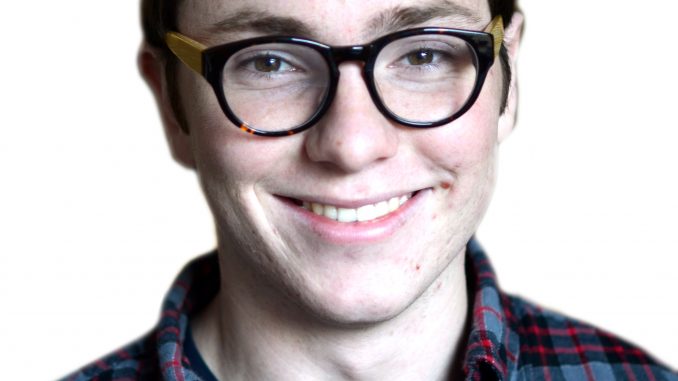
 Climate change is the most pressing environmental crisis of today’s world, yet we seem to move further into denial. As predicted by author, educator, environmentalist and co-founder of 350.org Bill McKibben, 400 parts per million of carbon dioxide is the “point of no return.”
Climate change is the most pressing environmental crisis of today’s world, yet we seem to move further into denial. As predicted by author, educator, environmentalist and co-founder of 350.org Bill McKibben, 400 parts per million of carbon dioxide is the “point of no return.”
Students shouldn’t disregard the issue during their college years – now is the time to make a difference.
A new student organization started by senior Donnie Irvine called Temple Environmental Justice is pressing the university to adopt greener policies and support environmentally friendly companies. There are many other environmentally-focused clubs that allow students to contribute their efforts to the defense of our planet.
The reasons for concern should be obvious.
“We are the first humans to ever breathe air with more than 400 parts per million of carbon dioxide,” the United Nations Secretary General Ban Ki-Moon said in opening remarks at the fifth U.N. Climate Change Conference in Warsaw, Poland on Nov. 19.
Simply put, sunlight can be reflected or absorbed. The earth then reemits that energy – only when greenhouse gases such as carbon dioxide, water vapor and methane absorb that energy do we feel heat. This is known as the greenhouse effect. As greenhouse gases increase, the earth’s capacity to absorb heat grows.
Additionally, the magnitude of future storms grows.
“The impacts of global warming are accelerating – there is more fuel for extreme weather, such as last October’s Hurricane Sandy and even more damaging, [last] month’s Typhoon Haiyan in the Pacific,” said Dan DeRosa, the field organizer for Environment New Jersey. “These events are a frightening reminder of why we must do everything we can to cut the dangerous carbon pollution that is fueling global warming and lessen the threat of even worse extreme weather in the future.”
Typhoon Haiyan ripped through the Philippines last month, devastating the lives of millions of citizens. A typhoon is a hurricane with a different name due to its hemisphere location.
In an unfortunate twist of irony, Haiyan hit just days before the Warsaw Climate Change Conference.
Naderev Sano, the Philippines’ negotiator at the conference, made headlines when the panel began on Nov. 11 after he pledged to fast in respect to all of the homeless and starving Filipino people affected by the storm. Haiyan was such a large storm that it surpassed the Saffir-Simpson scale usually used to measure typhoons and hurricanes.
Unfortunately, Sano and every other representative failed to make a mark. Representatives from 132 developing countries left the talks early. They blamed America for many of the world’s environmental issues – and rightfully so.
The United States produces the second-most carbon dioxide and one of the most per capita, according to The World Bank.
When the talks came to a close on Nov. 22, I felt the conference was a failure, just as in years past.
As carbon dioxide levels and potential global temperatures continue to spike, glaciers are melting. Glacial ice reflects sun rays, causing even more light to be absorbed. In turn, a vicious heating cycle is created. It should be noted that much of the glacial ice on Earth has already melted, which has led to rising sea levels.
The John Heinz National Wildlife Refuge at Tinicum in Delaware County documented sea levels rising more than a foot within the last 100 years. Sea level is expected to rise 3 feet over the next 100 years, according to a report by the Intergovernmental Panel on Climate Change. Almost 5 million Americans live in an area less than 4 feet from high tide, according to Climate Central.
It seems unbelievable that some still doubt global climate change when the National Climatic Data Center reported on Nov. 23 that October’s weather set record heat levels above the 20th century average.
The newest report by the IPCC, called “Climate Change 2013: The Physical Science Basis” said, with conclusive evidence, that global climate change is worsened by anthropogenic factors – in other words, because of burning fossil fuels. The use of these fuels emits more carbon dioxide than any natural process.
I’m pleased to say many Temple students are taking a stand. PNC, the university’s official bank, is one of the major investors in mountaintop removal for coal. Temple Environmental Justice wants PNC to remove any investments in the harmful coal mining process.
Some in Temple’s William C. Dunkelburg Owl Fund said they’d like to use their shareholder rights to prompt places such as Lincoln Financial and PNC to release sustainability reports.
Temple’s Green Council has been striving to reduce emissions collectively. The council is a coalition of sustainability clubs, including Temple Community Garden, Students for Environmental Action, Philly Eco Kids and Temple Student Government.
Even the smallest commitment to an environmentally conscious group can make a significant difference.
Toby Forstater can be reached at toby.mark.forstater@temple.edu.


Be the first to comment